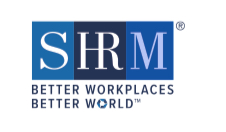A voluntary, comprehensive, and uniform federal paid leave framework is necessary to meet the needs of a modern, 21st century workplace, SHRM (the Society for Human Resource Management) wrote (advocacy.shrm.org) in a response to the U.S. Department of Labor’s Women’s Bureau Request for Information on paid leave.
The letter presents research (advocacy.shrm.org) from SHRM and Oxford Economics that found more employers are offering paid parental leave—including maternity leave, paternity leave, and adoption leave. The report showed:
- Over half of employers (55 percent) now offer paid maternity leave, 45 percent offer paid paternity leave, and 35 percent provide paid extended family care leave;
- Offering paid leave tends to have strategic benefits, including their ability to attract talent (58 percent), retention (55 percent), employee health and wellness (61 percent), and employee engagement (60 percent);
- Employers’ most commonly cited reason for not offering paid leave programs was cost. The cost of a comprehensive national paid leave program could range between $21.5 billion and $43.0 billion annually, depending on policy.
“As U.S. workplaces adapt, and respond to the pandemic, employers have called on their HR departments to re-examine and update leave policies amid significant labor market turmoil,” said Emily M. Dickens, SHRM Corporate Secretary, Chief of Staff, & Head, Government Affairs. “Congress should work towards a voluntary federal framework that gives employers the flexibility to offer a paid leave program that meets the unique needs of both employees and the business interests of the organization.”
Notably, more states are mandating paid leave in 2020 than they did in 2019. Additionally, most companies expect their paid leave benefits to remain the same or increase over the next two years. It’s important to note, however, the COVID-19 pandemic may have shifted executive and employee perceptions about the need for paid leave.

